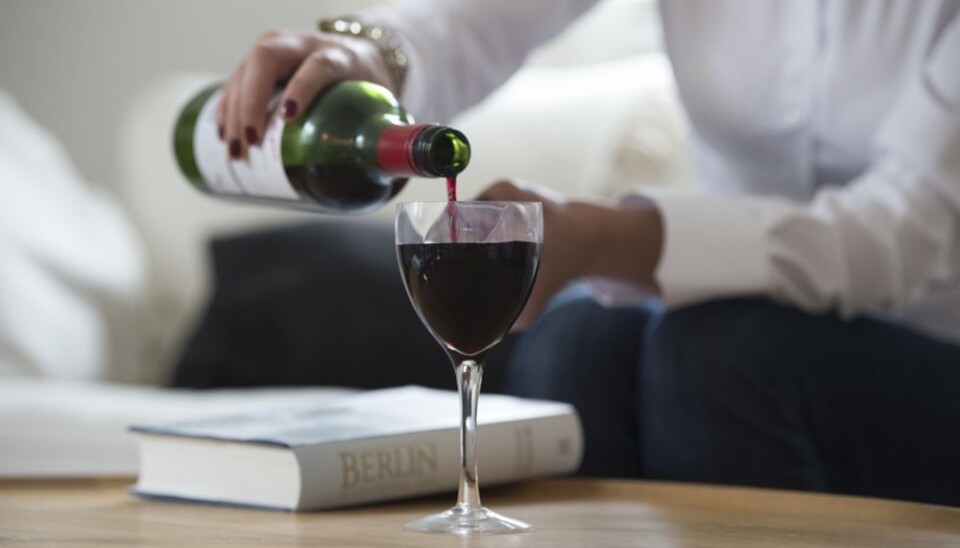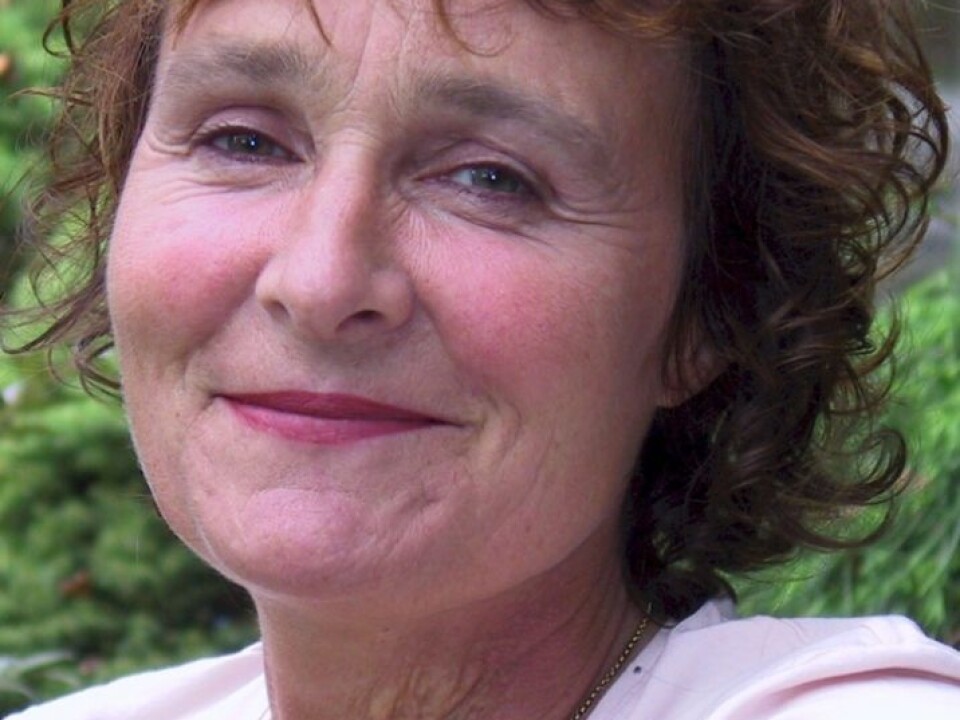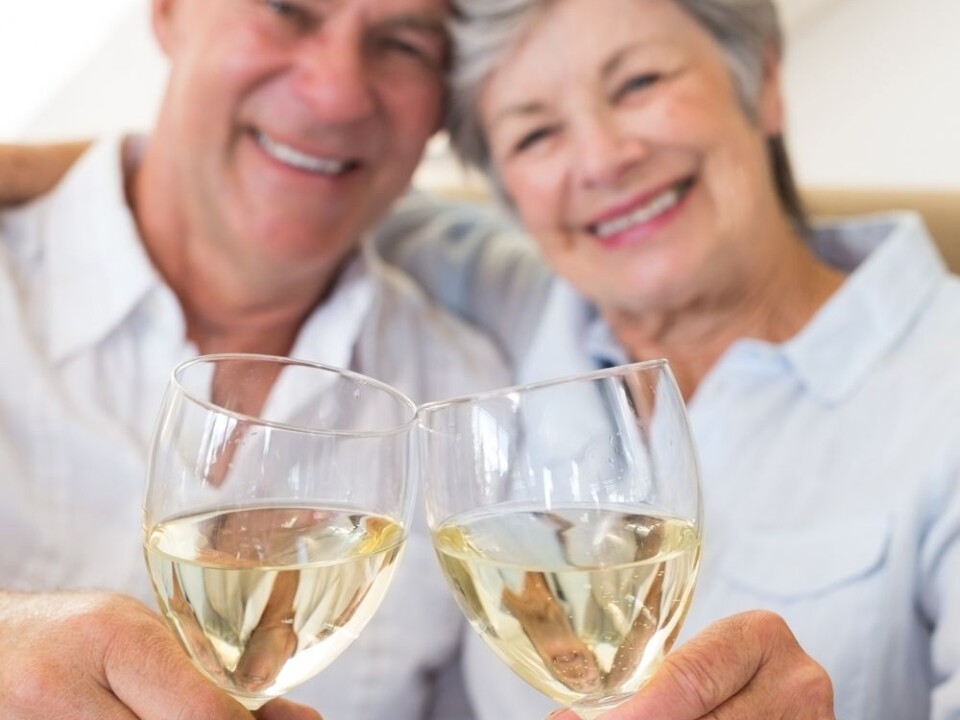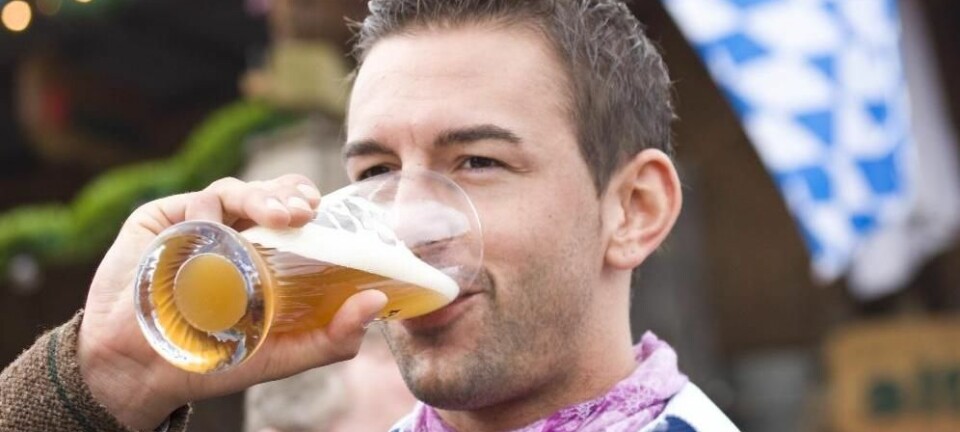
Older women want their wine
You can forget about arsenic and old lace. Menthol drops and butter toffees too. In the near future the favoured transgressions of old ladies will be along the line of merlots and pinot blancs. A new generation of elderly tipplers is slogging its way toward assisted living facilities.
Denne artikkelen er over ti år gammel og kan inneholde utdatert informasjon.
Many people in their 50s to 70s now drink a half bottle of wine several times a week. The biggest jump in alcohol consumption has been among women.
This revelation was made in the Norwegian Lifecourse, Ageing and Generation Study (NorLAG), where researchers followed roughly 3,500 persons over the age of 40 for a five-year-period.
“Although few will develop alcohol problems, with such high shares of big consumers we can expect an alarming increase in alcohol-related disorders. This can be challenging for the future’s public health and care services,” says Britt Slagsvold.
She is one of the authors of a new report from the Norwegian social research institute NOVA, which presented the study.

“On the whole, middle-aged women were the ones who increased their consumption the most during the five-year period, even though men still drink more.”
Women in their 50s
In the age group 50–59, 12.1 percent of the women were drinking a half bottle of wine or its equivalent at least two or three times a week. This share is four times higher than among women aged 30-39.
The percentage of men aged 60–69 who drank that much was 16.7. Only half as many men aged 30-39, just 8.5 percent, drank that much that often.
But real alcohol consumption was probably much higher than what was reported to researchers.
Other studies show that when people are asked how much they drink, they generally imbibe much more than they admit. Such underreporting, as it is called, is generally greatest amongst people who drink relatively much, Slagsvold says.

“People don’t remember. Or perhaps they don’t want to remember or divulge the quantities they drink.”
Better surveys of the young
We know a lot about the drinking habits of teens and young people. But relatively little research has been conducted on alcohol consumption in age groups that have been buying alcohol for decades without being asked to show any ID.
Research reports published in recent years in Norway and the other Nordic countries show the same tendency.
HUNT, the longitudinal population health study in Nord-Trøndelag County, is among them. It shows an increase in alcohol consumption in the county is highest among the elderly, both with regard to total consumption and frequency of drinking. Women are also a predominant factor here.
While old ladies used to tend to be complete teetotallers, now it’s not so easy to find a grandmother who says no to a glass of red wine.
Isn’t red wine healthy?

Newspapers and magazines are apt to tell us that “new research shows” it is healthy to have a glass of wine now and then. Alcohol is said to dilute the blood, reducing cardiovascular disease, diabetes and certain types of strokes.
Terje Knutheim, a psychologist at Borgestadklinikken, a resource centre for drug and alcohol problems in Skien, Norway, is an expert on elderly Norwegians’ use of alcohol. He also rejects much of the positive news about the benefits of a little wine.
“If you look critically at these studies, the positive effects of alcohol are very poorly documented. If they do offer any documentation, it mainly suggests that alcohol can have a certain effect on cardiovascular disorders among middle-aged persons. It doesn’t apply to the elderly,” Knutheim said.
“The elderly can probably benefit more from blueberry juice than from red wine,” says Knutheim.
Less natural mixer
In general, the elderly of both sexes are more harmed by alcohol than those who are a bit younger. The main reason is that the relationship between body liquids and fats change as we age. This means alcohol has a greater impact.
“There are big individual differences, but you can say that we undergo a change in our balance of liquids and we have less ‘mixer’ in our bodies as we age. So we get higher blood alcohol levels all the more quickly,” Knutheim says.
Much happens to our bodies after the age of 65 to make us less tolerant of alcohol. Many elderly also use medications that do not mix well with alcohol. Knutheim thinks special warnings and recommendations should be given to older people.
How much is too much?
Knutheim also believes that medical doctors should be more forthright in asking elderly patients about their alcohol habits.
“I don’t think doctors need to be as concerned about dependency as much as about health. By giving factual information regarding the effects of alcohol on the disorders their patients have, and how alcohol works in combination with their medications, they could nip the development of health problems in the bud. Many of the damaging effects of alcohol, such as memory problems, are hidden by other health disorders. Patients attribute their cognitive problems to their general health issues,” he said.
The health authorities in Norway make recommendations regarding maximum alcohol intake. The World Health Organization’s maximum limit for alcohol consumption per week is 14 units for women and 21 units for men.
Knutheim thinks the recommendations for the elderly should be about five to seven unist, because they have less tolerance. Women can withstand less than men. He adds that another important reminder is to refrain from a daily intake of alcohol. We should practice so-called “white days” now and then.
Not because of empty nests
One immediate connection crops up when alcohol consumption rises among people over the age of 50 – their lives tend to change in this period. Their children have fled the coop. They also have more leisure time on their hands once they reach retirement.
However, when the NOVA researchers kept track of the same persons during a five-year period, they found little support for such assumptions. People who underwent these transitions did not start drinking more.
High alcohol consumption seems to be linked to several factors that comprise modern life.
The population is well educated, more affluent, more people live alone, more live in cities and towns, individualistic values have become rather pervasive and women and men are on more equal footing.
Will they continue drinking?
The combined results of the NOVA study indicate that the future elderly will consume more alcohol than their predecessors – especially women. The elderly population is expanding, values are changing and a mounting number reside in urban rather than rural areas.
A development in the direction of higher alcohol consumption will be, however, influenced by other factors such as health information and health concerns.
The same group needs to be followed for more time to monitor changes in behaviour, preferences and life situations which can have an impact on alcohol consumption.
“The NorLAG study is unique in this sense as it follows the same people and contains excellent data about so many aspects of their lives,” says Slagsvold.
——————
Read the Norwegian version of this article at forskning.no
Translated by: Glenn Ostling



































